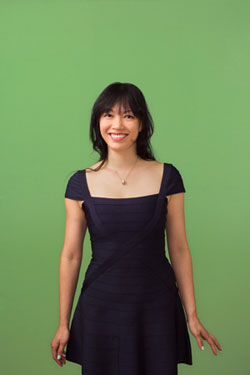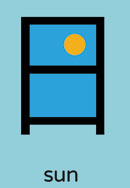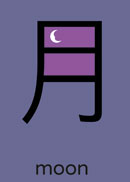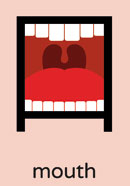Learn Mandarin the Chineasy way

Simply sign up to the Life & Arts myFT Digest -- delivered directly to your inbox.
ShaoLan Hsueh was born and raised in Taiwan, the daughter of a calligrapher and a ceramic artist. “I grew up in this environment, in the mud, in the ink, in the paintbrushes,” she says. She didn’t immediately take on her parents’ artistic legacy: describing herself as an unashamed “geek”, she studied biochemistry at university, wrote some unlikely and bestselling Microsoft user manuals (“I used my imagination and put a lot of my own thoughts in”) and went on to be a first-wave internet entrepreneur, co-founding pAsia, an early internet success story, in 1995. At its peak it had 250 employees.
Hsueh later moved to London and set up a venture capital investment firm in 2005, but her latest project is one directly linked to her family roots among the paint pots and calligraphy brushes. She’s developing a kind of shareware for the mind – a groundbreaking method of reading and interpreting Chinese characters for westerners, called “Chineasy”. And she’s (so far) funded the project herself from her savings, giving it all away free via her Facebook page and website. “It is a legacy, and something I would like to share,” she says. We meet in Chineasy’s tiny Soho office, where beautifully illustrated Chinese characters cover the walls, the papers fluttering gently in the breeze.
The Chineasy phenomenon came to public attention in May this year, when a talk Hsueh had given about her new learning method in February – at TED in California – went online. It’s a riveting piece of theatre: she paces the stage and introduces the nine basic characters – including mouth, person, fire – that form the building blocks for reading hundreds more. Hsueh realised she was on to something as soon as she’d given the talk: “A lot of people came up to me afterwards and said they could not believe it – they never thought they could learn Chinese and now they are interested and want to learn.” The talk has been viewed more than 900,000 times.

Behind this “flash card” approach to learning basic Chinese characters lies some serious research. Frustrated with her English-born children’s lack of interest in learning Mandarin, Hsueh tried several different methods of teaching them herself, and sent them to after-school clubs. Nothing worked. Most of the systems are repetition and speaking-based – so the focus is on being able to say a few Chinese words rather than on recognising the characters. The problem, says Hsueh, was that “it was all random and there was no method behind it”. She decided to create something that would engage her kids and had a proper methodology.
…

What she calls “my hobby” took two years to develop, during a sabbatical from her venture capital business. Most of the work was done when her children were asleep. (Her daughter is now 10 and her son eight.) Hsueh realised that going back to the ancient building blocks of the Chinese language, the pictograms that had surrounded her as a child, was exactly what she needed to capture and pass on to her children.
“In a nutshell, I take thousands of characters, I analyse them and break them down,” she says. “It’s just like when you see a Harry Potter Lego castle – it’s not easy to see what they are made of until you break them down, and by breaking them down and analysing them on the computer I am able to see, just as the Lego castle is built with several frequently used building blocks, so there are thousands of characters and they are built with similar elements. You only need to know a few of those building blocks. Some of them are much more frequently used than others, so you prioritise them.”

She used her technical knowledge to spend months building her own programme to log, analyse and group characters together. She shows me a simplified map of her system on her laptop. It looks like a giant projection of the astrological constellations, criss-crossed by a mass of lines across space. So far she has mapped several thousand characters, and their compounds, and they are further placed within categories that reflect the world that surrounded the ancient Chinese people who first drew these pictograms. These include, for example, signs relating to nature, objects, body parts and people. Hsueh points to the sun and moon to explain how it works. “If you know the sun and the moon you can build another character – the sun and moon together means brightness because sun and moon were the source of light before electricity was invented.”

So far, Hsueh has commissioned illustrations for some 200 of the most-used characters. Her aim is to build in animations to help learners remember each one. It’s a time-consuming and expensive business – each illustration takes 20 or 30 drafts to get right, she says, and she hopes to have both animation and phonetic pronunciation available online. (That’s going to be stage two of learning Chineasy – as there’s no phonetic link to the characters this needs to be memorised separately.)
Last month, the project team (there are 10 people working currently, funded by Hsueh) launched a KickStarter campaign to raise £75,000 to finalise several hundred more characters and to get them online and ready for learners to use. There’s also a Chineasy book in production, due to be published next year, as well as flash cards, an app (of course) and other learning aids. (The campaign runs until August 22 and has so far raised almost £68,000.)
Simply being able to read basic Chinese characters is a huge psychological breakthrough for westerners but Hsueh’s ambitions go beyond that. The Chineasy Facebook page is updated daily, and she’s careful to include the history and culture of each symbol. “If you see a pig under a roof, that means ‘home’, because ancient Chinese people raised pigs at home. A cow under a roof means ‘prison’, because a cow is treated like a prisoner and locked away. And a woman under a roof is ‘safe’ because she will produce offspring for you and you are safe. If you tell people stories like that, they will have a much greater understanding of Chinese cultural history.” These stories also act as handy mnemonics.
It’s not a perfect system, by any means. There are lots of rude “below the line” comments under Hsueh’s TED talk, suggesting that her method is simplistic or derivative, or that others have developed “building block” approaches to learning Chinese before.

“I saw all those comments,” says Hsueh when I bring up the criticism. She points out that she’s not trying to replace existing teaching methods, just add to them. “I am giving them a tool they didn’t have otherwise.” Her teaching method is undoubtedly still in its infancy but Hsueh’s enthusiasm is infectious and rooted in curiosity about other cultures – she’s simply harnessing what she knows about logical systems and software and applying it to create the building blocks of communication between speakers of different languages.
…
It’s a method calculated to appeal to the Digital Native generation: of the 20,000 or so people who “like” Chineasy on Facebook, the three biggest user groups are in the US, Brazil and Great Britain. And they are mostly young – under 35. Some of Chineasy’s fans, she says, are second generation Chinese living in other countries – they can speak their parents’ mother tongue, but they can’t read the characters, a task that’s daunting even for native speakers. “Although there are more than 20,000 characters, most Chinese people will only know a few thousand. A university student, for example, will know five or six thousand.” Hsueh first aims to get Chineasy learners to remember 200 or so characters – and from that, she says, they can build thousands of phrases.

It’s a seductive idea. I’ve watched the TED talk several times and now check the Facebook page for updates and new instalments of Hsueh’s stories. I have no idea how much I’ve committed to memory – probably a dozen characters – but if I were about to travel to a Chinese-speaking country I would redouble my efforts. The point is, Hsueh makes you feel that you could learn Chinese. And that’s half the battle.
Chineasy can be worked on alone, or used as a classroom aid, but because of the way it’s spreading through social media, its young devotees tend to help each other. It’s a peer-to-peer model in action: “Lots of my friends talk to each other on Facebook, become friends, the more advanced people help beginners.” They don’t just wait for Hsueh to come and tell them what to do next. Several have offered to translate Chineasy – it’s English only at the moment – into other languages. “I hope eventually it becomes a movement between languages,” she says.
On another level, she sees Chineasy as a wider project to engage westerners more generally with all Asian cultures. Chinese is a collection of languages, covering Mandarin, Hakka, Wu, Cantonese and others. “They have the same written form, which is the form I am teaching, and most of the characters also cover Kanji, Japanese characters. It doesn’t matter how it is pronounced for you to know this.”
So, potentially, Chineasy unlocks those hidden, mysterious meanings – on signs, menus, internet pages and in business dealings – right across Asia. More than that, it could be a bridge to deeper cultural understanding. It’s grown from Hsueh’s hobby to become something meaningful to thousands of other people. Most importantly, it’s worked a treat on the two people she first set out to impress – her children, who now know somewhere between 200 and 300 characters.
“They are following it, and they think their Mummy’s cool. With their encouragement I will carry on doing it.”
Isabel Berwick is associate editor of FT Life & Arts. Find Chineasy on Facebook or at www.chineasy.org; to comment, email magazineletters@ft.com
——————————————-
Letter in response to this article:
Bane of medical world is not hospitality but lazy thinking/ From Dr Peter Jenkins
Comments